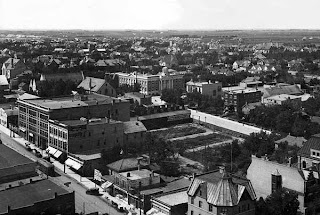

What does all this talk of New Economies and Creativity have to do with the 2010 civic election in Brandon? It is about a stance, a way of thinking. The mayor is the City's civic leader. Does this person embrace change? Look for opportunities? Have a curious mind? Encourage innovation vs the way we've always done it? Because these are the characteristics that will drive a successful economy or business in the 21st century, and they are also the characteristics that will drive a successful city.
I believe that because of the new technologies and the acceleration of change, knowledge and creativity will be centre of success in the future. Concentrations of skilled people, rather than raw materials, are the engines of growth. Brandon is well positioned to maximize these new opportunities because of our university, community college, and the regional health authority. Access to well-educated pools of creative people (entrepreneurs, innovators, researchers, artisans, designers) is what counts.
Human capital, centres of innovation, research institutions are key assets in Brandon's future. Fostering connections between them and the business community is critical. And the mayor can play a key role in putting the right people around the table.
Brandon will also benefit from this move to the New Economy because of the restrictions of location- access to raw materials, cheap labour, and transportation which was critical in the old economy, is decreasing. People often bemoan our lack of air service. Rather than letting that be a barrier to economic growth, what about looking for economic opportunities where airports are redundant? The internet highway is key to our future, and Brandon's connectivity is outstanding.
One of our challenges in the city will be to build on our culture as a learning community. I'll be presenting ideas on this in other blog postings called One Smart City. We need to create opportunities to have more people connected online, engaged intellectually, and contributing. Brandon needs to be known for our brains, not our brawn.
Our cities must be livable to attract the creative and skilled people that fuel the economy of Brandon's future. Studies show that quality of life and place are more important to attracting technology firms for example, than traditional factors such as land costs and taxes. cultural life, diversity, environmental quality, and digital infrastructure are the magnets for economic growth in Brandon. We are a lovely, safe, clean, beautiful city. Pity the people in large urban centres, stuck in long commutes, anxious about lack of family time, desperate for a bit of green grass and gardens. Brandon is the ideal community to recruit these people to. And the computer on their desk can connect them back to that office tower where they used to work.
Brandon could be a natural location for pools of creative, knowledge-based jobs- if the city can attract and hold them. Old economy negatives can become new economy assets. Recognizing the opportunities, responsiveness, and flexibility are needed to attract these people, these jobs, and capitalize on Brandon's assets.
The Prosperity Agenda is a series of postings dealing with economic development in Brandon. City Hall needs to develop a strategy to capitalize on these new opportunities to encourage higher income growth and increased prosperity for Brandon. I'd love to hear from you. Email me at shariformayor@gmail.com with your ideas.





